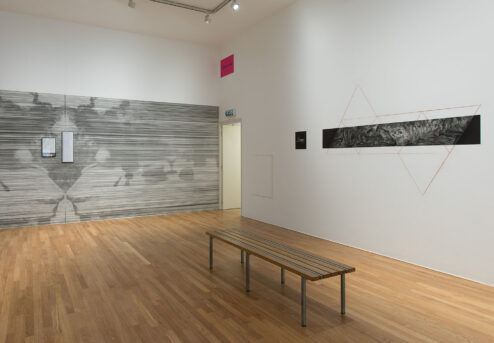Foam Fusion
Date: 9 -11 june 2017
Raphaël Dallaporta (b. France, 1980) is internationally acclaimed for his long-term collaborative projects with professionals from a wide range of fields. He has worked closely with a landmine clearer (Antipersonnel), a reporter who covers social work at its intersection with the law (Domestic Slavery), a forensic pathologist (Fragile) and archaeologists (Ruins). He is concerned with public issues addressing human rights as well as more symbolic subjects such as the fragility of life. He usually combines text and images. In 2011 Dallaporta was the winner of the Foam Paul Huf Award and to mark the occasion he presented four of his long- term projects in the exhibition Observation. This current exhibition presents two of his recent collaborative projects.
Correspondance (2015) is an installation inspired by the collaboration between Joseph Nicéphore Niépce (1765 – 1833) and Louis-Jacques-Mandé Daguerre (1787 – 1851), the inventors of photography. It is based on the codes they used in their correspondence to protect the secret of the photographic technique. When writing to each other they used numbers in place of any terms that had to do with the technical procedure, such as essence of lavender or sulphuric acid. Despite the fact that only Daguerre’s part of the correspondence and a page of encryption by Niépce have survived, a team of scientists attached to the Musée Nicéphore Niépce succeeded in cracking the codes.
Niépce’s photograph of a view out across the roofs of Paris is often regarded as the first photograph. Yet we know of an older photo by Niépce, of a laid table. It has been lost and now exists only as a reproduction in a book. Dallaporta converted a JPG of that picture into numbers and symbols from which it is composed, then replaced the combinations of figures that corresponded with Niépce and Daguerre’s codes with the words to which they refer. This distorts the image. As Dallaporta says, ‘I am intimately convinced that secrecy is the source of every photographic image. […] So here as a contribution and a tribute to all secrets that photography keeps hidden, I offer, symbolically, the hundred or so original mentions the code concealed.’
The geological site known as the Chauvet-Pont-d’Arc Cave (2016) is at the heart of the Ardèche department in southern France. It was untouched for more than 30,000 years before its discovery in 1994. Access to its hundreds of cave paintings is limited strictly to researchers and scientists, but Dallaporta entered into a collaboration with them and gained access to the cave. He took panoramic photographs of the interior that reveal painted horses, lions, apes and bison.
Dallaporta superimposed mathematical shapes on the photos, using pigments of red clay from the Chauvet-Pont-d’Arc Cave. The shapes are derived from the Dymaxion map by Buckminster Fuller, who unfolded, as it were, the entire surface of the earth to make it flat. This created a complete map of the world without either visual distortion or the divisions between continents that artificially split humanity, enabling us to see the world more accurately. Dallaporta’s use of the map is a reference to the anthropological hypothesis that all caves are linked to each other and to the universe as a whole
Raphaël Dallaporta won the Young Photographer ICP Infinity Award in 2010 and the Foam Paul Huf Award in 2011. His work has been exhibited at the Musée de l’Elysée in Switzerland and at the Musée Nicéphore Niépce and Les Rencontres d’Arles, both in France. Antipersonnel, Domestic Slavery, Ruins, Fragile and Chauvet – Pont-d’Arc L’inappropriable have been published as books.



